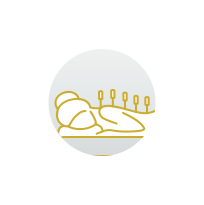Many individuals nowadays are trying to get pregnant after 40 and having children later than their parents and grandparents.
This is due to many reasons of course such as the need for more schooling, the importance of establishing careers, getting some financial stability, and meeting the right person. With advancing age, fertility does decline and end eventually for all women and for some individuals, getting pregnant after forty can become challenging. This is due to many factors, one of which is sugar consumption!
In this article we’re going to explore the connection between infertility and sugar consumption. We’ll look at how sugar can lower your chances of getting pregnant in your 40s. And you’ll learn about how it impacts your hormone levels and what you can do about it.
Does Sugar Cause Infertility?
In addition to having children later in life, what is also much more common nowadays is that individuals are eating WAY more processed sugars than previous generations.
In fact, the average American eats approximately 66 lbs of added sugars yearly and nearly 150 pounds of sugar in total. This is at least two to four times as much as the maximum recommendation given by the American Heart Association and even more so than that given by the WHO. For many individuals, that is their body weight in sugar!
Why Is This Important For Pregnancy After 40?
Well, sugar accelerates a process known as glycation in the body which is a process involving sugar combining proteins in the body and damaging them. Whenever we accelerate damaging processes in the body, it is obviously a bad thing. It gives the body more work to do. It also leaves us with a bunch of ‘junk’ called advanced glycation end products (AGE’s) which gum up our body and cells. The process of glycation points to the link between sugar consumption, age and fertility.
The Process of Glycation
When it comes to sugar, it also stresses something called the HPA axis.
The Sugar and Hormone Connection
The HPA axis is a feedback loop that involves the hypothalamus gland (part of the brain), the pituitary (another part of the brain), and the adrenals. This axis also involves the ovaries and the thyroid in women, which form another feedback loop called the OAT axis (ovarian, adrenal, thyroid axis). Sugar, when consumed in excess which is the ‘norm’ nowadays, increases cortisol production in the adrenal glands and insulin production in the pancreas. These trends can lead to things such as adrenal fatigue, prediabetes/diabetes, and you guessed it—increased infertility.
This is because this excess of sugar actually is a ‘stressor’!
HPA AXIS DIAGRAM
This extra cortisol, when repeatedly produced, eventually can lead to a tiring of what we call the HPA and OAT axes, and we then see gradually lowering functionality of these respective axes. Since the ovaries are involved in the OAT axis, this can subsequently affect key ovarian hormone production. In fact, the body will produce cortisol at the expense of other hormones such as progesterone especially for women. We term this the ‘pregnenolone steal.’
This is an especially salient point because progesterone is needed for successful implantation and maintenance of a pregnancy. This is one of the key issues that many women over 35 face that figures into declining fertility.
Because the norm is to be routinely stressed out due to many factors and it’s common to be excessively consuming sugar, we routinely negatively impact the preservation of good hormone balance crucial for preserving fertility. Many people don’t think that drinking their Coca-Cola or having their sweetened Dunkin’ Donuts coffee is potentially affecting their fertility but in reality, it very well may be!
Infographic: Addressing Age Related Infertility
Enter Your Email Below to Instantly Download A Free Infographic on Addressing Age Related Infertility Naturally
A Key to Getting Pregnant After 40: Preserving Youthful Hormone Levels
Fertility is of course multi-dimensional and infertility problems are as well. But for many women, too low progesterone can be a major factor as to why they may get pregnant but miscarry repeatedly. Thus in minimizing risk for this potential complicating factor, a couple may wish to take a careful look at not just the diet in general, but specifically sugar content with added and total sugars.
The more you can minimize damaging and depleting processes such as glycation and the pregnenolone steal, the better your odds will be in preserving fertility and getting pregnant after forty.
There are several general eating plans that a woman may want to consider to inherently lower her sugar consumption and thus encourage better fertility from this standpoint. One is the Paleo diet and if wanting to go even more diligent, the Ketogenic diet.
For those unfamiliar, let me explain each of these in greater detail.
The Paleo Diet vs. the Ketogenic Diet for Preserving Fertility
The Paleo dietary approach focuses on what is believed to be how humans largely ate before the dawn of modern agriculture (around 10,000 years ago). In this approach, grains and dairy foods are eschewed for: nuts and seeds, quality animal meats, vegetables, fruits, and some tubers (such as sweet potatoes, squashes, etc).
The diet is focused on providing lower glycemic load foods (i.e. the total amount of carbs that turn into sugar in the body) while increasing nutrient dense foods (which are typically veggies, fruits, meats, nuts and seeds as noted). This inherently tends to lower the volume of carbohydrates consumed, thereby reducing the level of glycation inherently caused from eating.
The ketogenic diet is in some ways, a more strict version of the paleo dietary approach. Within the ketogenic diet approach, there are also degrees of restriction to carbohydrates as well. Some individuals trying to control diabetes or lose lots of weight may be limiting their carbohydrates down to 20-30 grams for the entire day.
This means essentially they will only be eating items such as:
- good quality fats (such as olives, avocados, nuts and seeds, butter, etc.),
- animal meats
- non-starchy vegetables AND
- (In contrast to the paleo diet): full-fat, low carbohydrate dairy foods
This is because the carbohydrate content is paramount in the ketogenic dietary approach most of all. Even foods such as squashes, sweet potatoes, almost all fruits, rutabagas, turnips and more may be off of this diet.
On less strict versions of this approach, one may eat up to 100 grams of carbohydrates which again will focus on vegetables, low glycemic load fruits such as berries, nuts and seeds, perhaps limited amounts of root vegetables and again the animal based foods.
One’s overall health needs and goals may suggest one plan or the other but from a sugar perspective, one could try either approach with likely getting benefit.
Concluding Thoughts
Both of these dietary approaches inherently reduce sugar’s presence in the body, minimizing the possibility of glycation, easing the stress on the pancreas and adrenal glands to stimulate cortisol and insulin production to stimulate the pregnenolone steal which can ultimately cause HPA axis dysfunction.
So while your obstetrician or gynecologist may not mention this, you can now truly understand the connection between what you eat and increasing your odds of getting pregnant after forty! The connection between sugar, stress and infertility is more direct, as you now understand, than many people realize. If you didn’t have a good reason before, you should now to get serious about cutting the sugar. Your fertility may just depend on it!
If you are over 40 and are trying to get pregnant, take these steps to help reduce the impact of sugar on your chance of a healthy pregnancy.
What are your thoughts on sugar and infertility? Have you tried any of these dietary approaches to reduce your sugar consumption? What was your experience and which one(s) did you use? Would love to learn more about you and your experiences.











